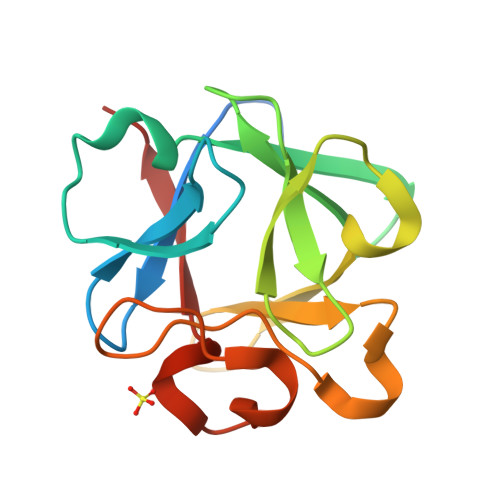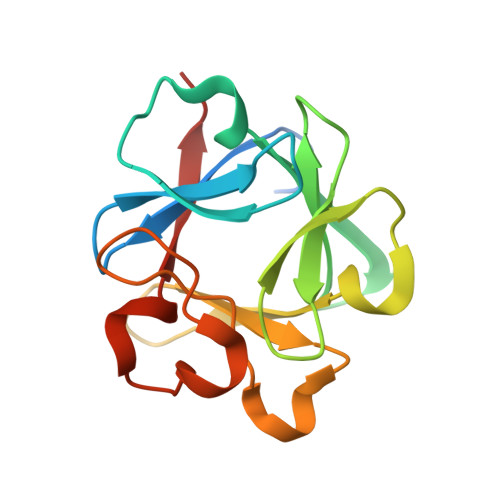A logical OR redundancy within the Asx-Pro-Asx-Gly type I beta-turn motif.
Lee, J., Dubey, V.K., Longo, L.M., Blaber, M.(2008) J Mol Biology 377: 1251-1264
- PubMed: 18308335
- DOI: https://doi.org/10.1016/j.jmb.2008.01.055
- Primary Citation of Related Structures:
3B9U, 3BA4, 3BA5, 3BA7, 3BAD, 3BAG, 3BAH, 3BAO, 3BAQ, 3BAU, 3BAV, 3BB2 - PubMed Abstract:
Turn secondary structure is essential to the formation of globular protein architecture. Turn structures are, however, much more complex than either alpha-helix or beta-sheet, and the thermodynamics and folding kinetics are poorly understood. Type I beta-turns are the most common type of reverse turn, and they exhibit a statistical consensus sequence of Asx-Pro-Asx-Gly (where Asx is Asp or Asn). A comprehensive series of individual and combined Asx mutations has been constructed within three separate type I 3:5 G1 bulge beta-turns in human fibroblast growth factor-1, and their effects on structure, stability, and folding have been determined. The results show a fundamental logical OR relationship between the Asx residues in the motif, involving H-bond interactions with main-chain amides within the turn. These interactions can be modulated by additional interactions with residues adjacent to the turn at positions i+4 and i+6. The results show that the Asx residues in the turn motif make a substantial contribution to the overall stability of the protein, and the Asx logical OR relationship defines a redundant system that can compensate for deleterious point mutations. The results also show that the stability of the turn is unlikely to be the prime determinant of formation of turn structure in the folding transition state.
Organizational Affiliation:
Department of Biomedical Sciences, College of Medicine, Florida State University, Tallahassee, FL 32306-4300, USA.

















